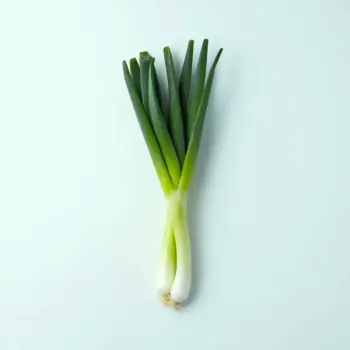Shallots and green onions are both flavorful ingredients used in cooking. Shallots offer a delicate, slightly sweet taste while green onions provide a mild, crisp bite. They are versatile in dishes, with shallots being great for mellow flavor bases and green onions serving well as a fresh garnish.

Shallots are a type of onion that offer a delicate and slightly sweet flavor with a hint of sharpness. They are often used in fine cooking for their ability to enhance a dish without overpowering it.

Green onions, also known as scallions, are young shoots of onions harvested before the bulb has enlarged. They have a mild onion taste and are used both raw and cooked to add a crisp, aromatic element to dishes.
Shallots have a more refined, subtle taste compared to the fresh, sharp bite of green onions. In texture, shallots become soft and mellow when cooked, while green onions offer a crunchy texture.
Shallots are often used in dressings, sauces, and as a base for various dishes, whereas green onions are commonly used as a garnish or in salads and stir-fries for a fresh flavor.
Shallots grow in clusters with a head similar to garlic and are available year-round. Green onions have a simpler growth pattern and are also available throughout the year, often found in bunches at the grocery store.

Your ultimate Recipe Box, Meal Planner, and Cooking Class all in one
In vinaigrettes or creamy dressings, finely minced shallots can add a gentle depth of flavor. They are particularly suitable for delicate salads where a subtle onion hint is desired. Green onions can bring a bright and fresh taste to dressings, especially when used raw. They are excellent in more casual, vibrant dressings or where a stronger onion presence is welcome.
When simmered in soups or stews, shallots impart a complex flavor base that is less intense than regular onions. They can be especially complementary in seafood or vegetable broths. Sliced green onions are often added towards the end of cooking soups or stews to preserve their crisp texture and fresh taste. They make a colorful and flavorful garnish.
Shallots can be used in stir-fries, especially Asian cuisine, to add a subtle sweetness and depth. They caramelize well and complement other bold flavors without dominating the dish. Green onions are a classic ingredient in many stir-fry recipes, adding both color and a sharp counterpoint to other savory ingredients. They are often added last to retain crispness.
Both shallots and green onions are low in calories and rich in nutrients, including vitamin C, potassium, and dietary fiber.
| Nutrient | Shallots ( per 100g ) | Green Onions ( per 100g ) |
|---|---|---|
| Fat | 0.1g | 0.2g |
| Fiber | 3.2g | 2.6g |
| Protein | 2.5g | 1.8g |
| Calories | 72 | 32 |
| Vitamin C | 8mg | 18.8mg |
| Carbohydrates | 16.8g | 7.3g |
Shallots are not commonly used as a garnish because they lose their crispness when raw. For garnishing, green onions are more suitable due to their fresh texture and color.
Shallots have a milder and more refined flavor compared to the sharpness of green onions, making them less overpowering in dishes.
Yes, you can use green onions in dressings for a sharper taste, but use them sparingly as they are more potent than shallots.
Both shallots and green onions are healthy options with their own nutritional benefits. Shallots have higher caloric and carbohydrate content, while green onions are higher in vitamin C.
Shallots should be stored in a cool, dry place away from light, while green onions are best kept in the refrigerator's crisper drawer and used within a week for optimal freshness.